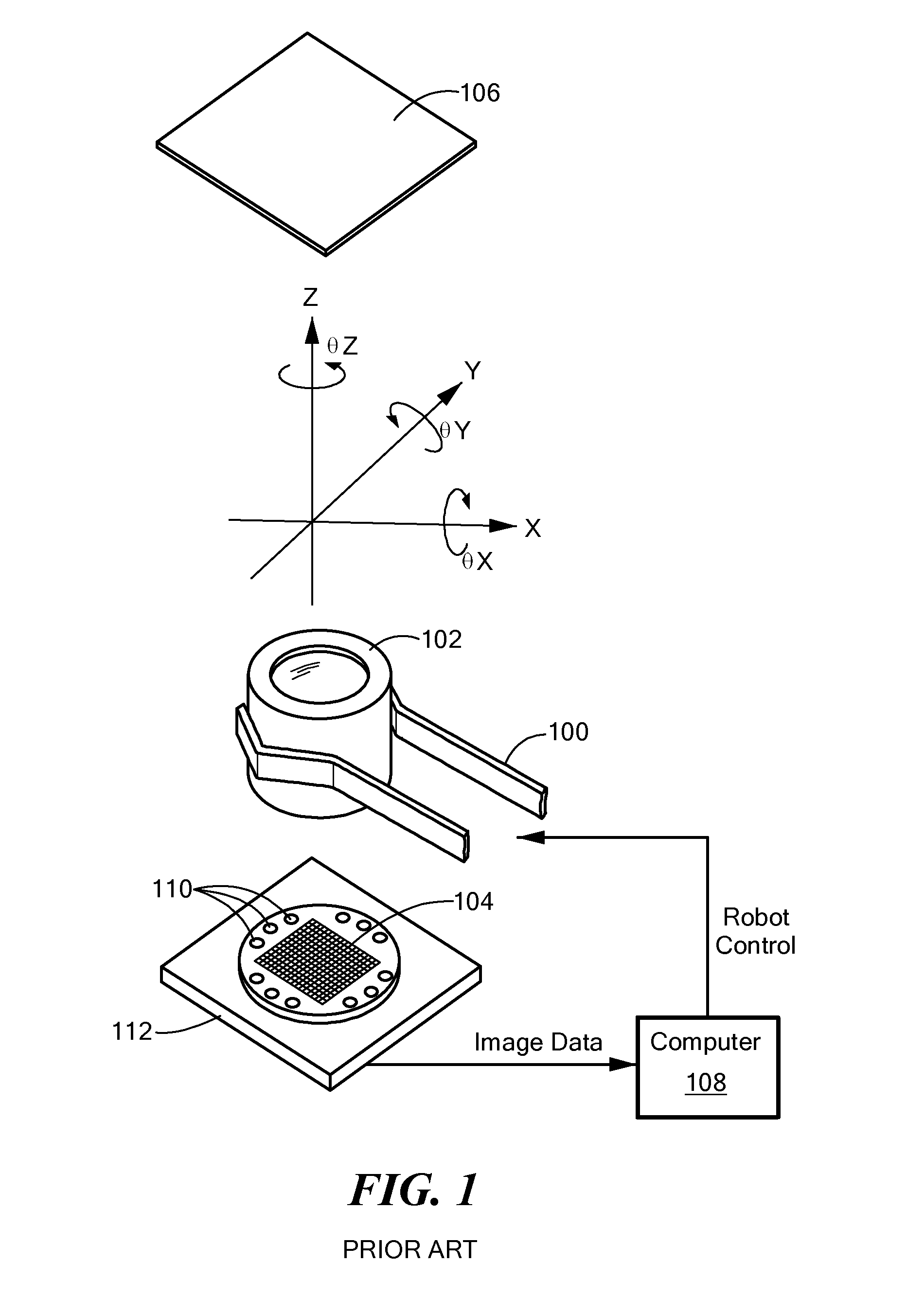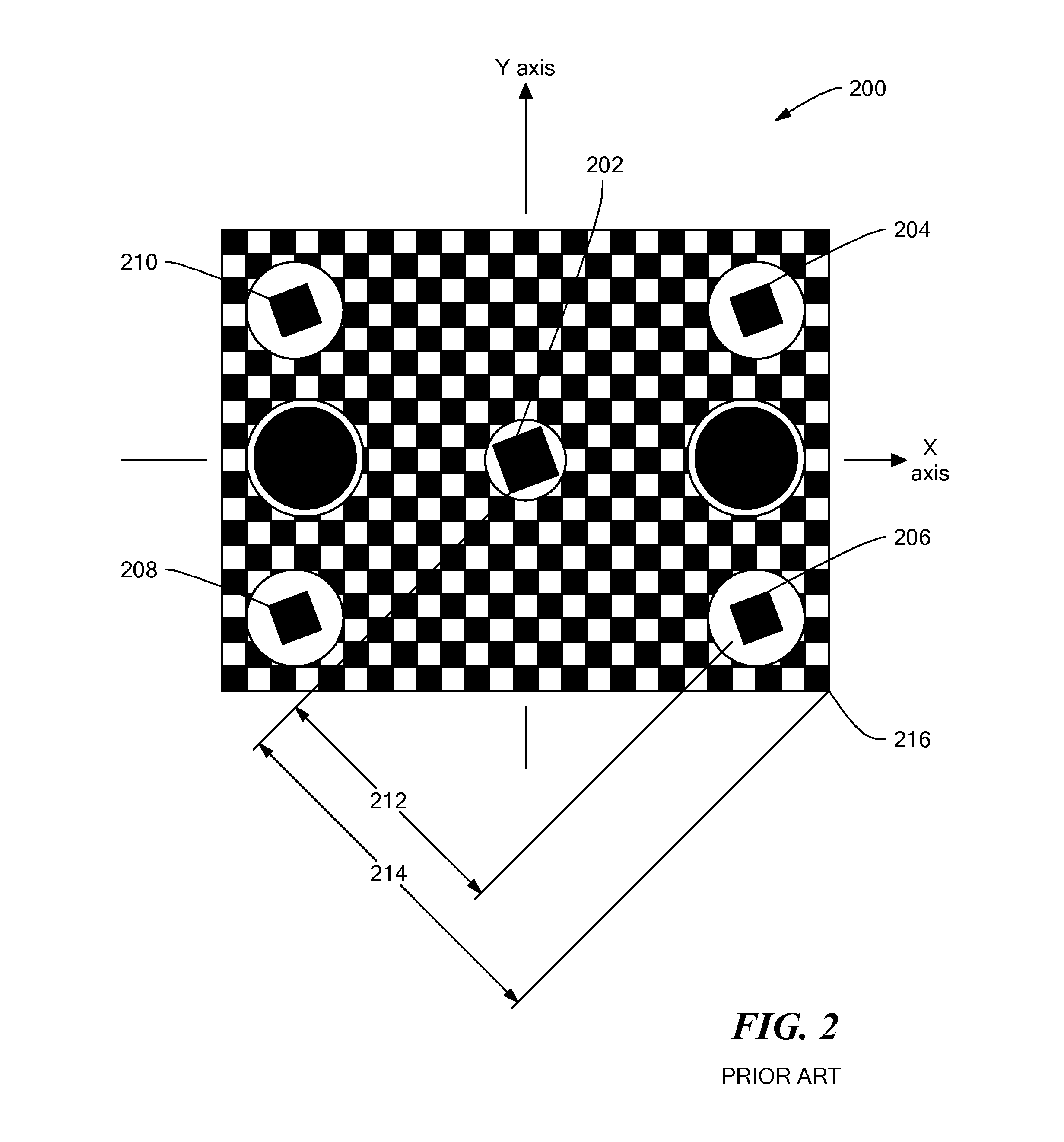Active Alignment Using Continuous Motion Sweeps and Temporal Interpolation
a technology of active alignment and sweeps, applied in the direction of computer control, program control, instruments, etc., can solve the problems of inability to compensate for all potential, inability to align about the optical or z axis, and inability to uniformly align optical elements and lenses
- Summary
- Abstract
- Description
- Claims
- Application Information
AI Technical Summary
Benefits of technology
Problems solved by technology
Method used
Image
Examples
Embodiment Construction
[0011]An embodiment of the present invention provides a computer-implemented method for actively aligning a first optical element to a second optical element. The method involves performing operations by a processor. A robot continuously scans the first optical element along a trajectory from a starting location to an ending location. While the robot continuously scans the first optical element from the starting location to the ending location, a plurality of time spaced-apart positions of the first optical element are stored. In addition, a plurality of time spaced-apart alignment data items is acquired. Each alignment data item of the plurality of time spaced-apart alignment data items results from an optical signal that passed through the first optical element and was received by the second optical element. Each alignment data item contains data indicative of a degree of optical alignment between the first optical element and the second optical element. A desired alignment positi...
PUM
 Login to View More
Login to View More Abstract
Description
Claims
Application Information
 Login to View More
Login to View More - R&D
- Intellectual Property
- Life Sciences
- Materials
- Tech Scout
- Unparalleled Data Quality
- Higher Quality Content
- 60% Fewer Hallucinations
Browse by: Latest US Patents, China's latest patents, Technical Efficacy Thesaurus, Application Domain, Technology Topic, Popular Technical Reports.
© 2025 PatSnap. All rights reserved.Legal|Privacy policy|Modern Slavery Act Transparency Statement|Sitemap|About US| Contact US: help@patsnap.com



